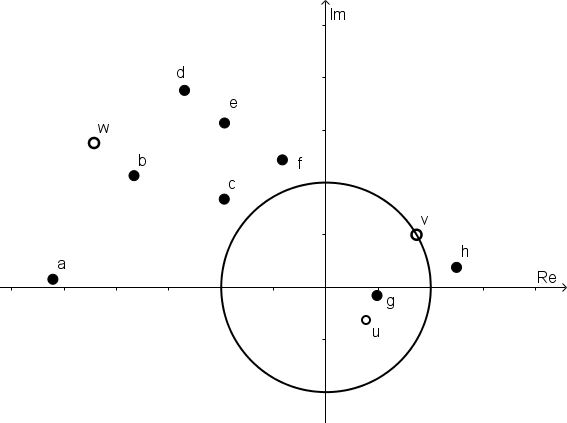Skip over navigation
This activity follows on from Into the Wilderness.

In this diagram, there are several points and the unit circle (the circle with centre at the origin and radius 1).
The points $a$ to $h$ are the sum or product of combinations of $u$, $v$ and $w$.
Can you work out which of the expression below describes each point?
You might now like to start Mapping the Territory.
This problem was inspired by an exercise in Complex Analysis by Ian Stewart and David Tall.
Or search by topic
Number and algebra
Geometry and measure
Probability and statistics
Working mathematically
Advanced mathematics
For younger learners
Complex Puzzle
Age 14 to 18
Challenge Level 





This resource is part of our Adventures with Complex Numbers collection
This activity follows on from Into the Wilderness.
In this diagram, there are several points and the unit circle (the circle with centre at the origin and radius 1).
The points $a$ to $h$ are the sum or product of combinations of $u$, $v$ and $w$.
Can you work out which of the expression below describes each point?
$u + v$
$u + w$
$v + w$
$u + v + w$
$uv$
$uw$
$vw$
$uvw$
$u + w$
$v + w$
$u + v + w$
$uv$
$uw$
$vw$
$uvw$
You might now like to start Mapping the Territory.
This problem was inspired by an exercise in Complex Analysis by Ian Stewart and David Tall.

